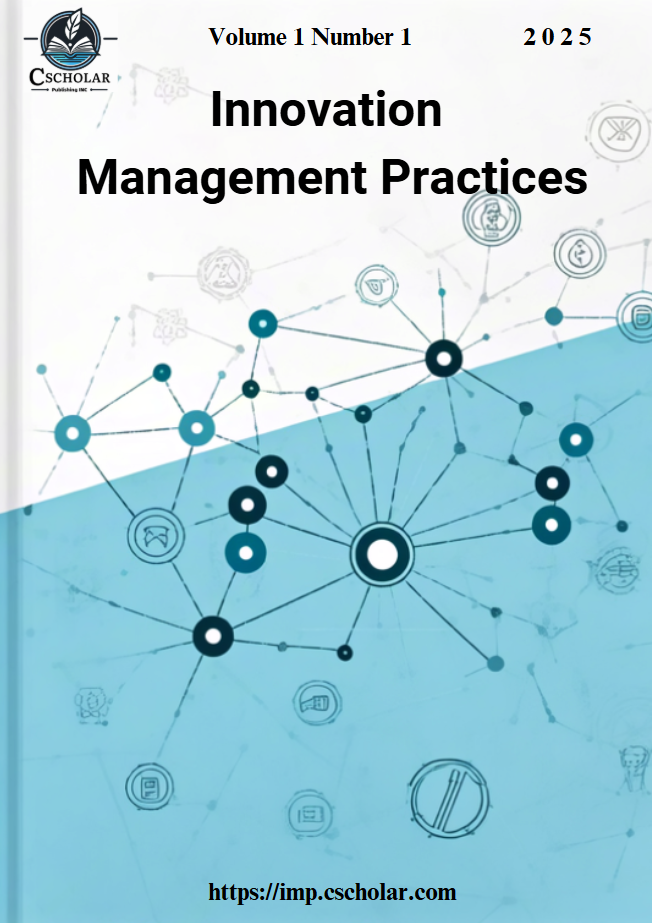Literature Review on the Impact of Risk Management Committees on the Effectiveness of Enterprise Risk Management
DOI:
https://doi.org/10.71204/wx1fmr32Keywords:
Risk Management Committee, Enterprise Risk Management, StructureAbstract
The establishment of the Risk Management Committee aims to enhance the board's ability to monitor risks, but there is no consensus on its impact on the effectiveness of enterprise risk management. This article provides a literature review from two aspects: whether the risk management committee will improve the effectiveness of enterprise risk management, and which features will affect the effectiveness of enterprise risk management. Research has found that the structural characteristics of risk management committees, including size, independence, professional knowledge and skills, meeting frequency, and proportion of female members, have a significant impact on the effectiveness of enterprise risk management. However, the relationship between these characteristics and corporate performance is not consistent and may be influenced by moderating variables such as external environmental uncertainty, industry competition intensity, and corporate complexity. This article suggests that companies should establish a reasonable risk management committee based on their own characteristics and consider incorporating digital skills into the professional knowledge of committee members. Future research should consider the impact of specific situational factors on the relationship between risk management committees and the effectiveness of enterprise risk management.
References
Adams, R. B., & Ferreira, D. (2009). Women in the boardroom and their impact on governance and performance. Journal of Financial Economics, 9(4), 291-309.
Aebi, V., Sabato, G., & Schmid, M. (2012). Risk management, corporate governance, and bank performance in the financial crisis. Journal of Banking and Finance, 36(12), 3213-3226.
Beasley, M. S., Branson, B. C., & Hancock, B. V. (2008). Rising expectations. Journal of Accountancy, 205, 44.
Bédard, J., Chtourou, S. M., & Courteau, L. (2004). The effect of audit committee expertise, independence, and activity on aggressive earnings management. Auditing: A Journal of Practice and Theory, 23(2), 13-35.
Campbell, K., & Minguez-Vera, A. (2008). Gender diversity in the boardroom and firm financial performance. Journal of Business Ethics, 83(3), 435-451.
Elamer, A. A. (2018). The impact of risk committee on financial performance of UK financial institutions. International Journal of Accounting and Finance, 8.
Ellul, A., & Yerramilli, V. (2013). Stronger risk controls, lower risk: Evidence from US bank holding companies. The Journal of Finance, 68(5), 1757-1803.
Farrell, M., & Gallagher, R. (2015). The valuation implications of enterprise risk management maturity. The Journal of Risk and Insurance, 82(3), 625-657.
Gordon, L. A., Loeb, M. P., & Tseng, C. Y. (2009). Enterprise risk management and firm performance: A contingency perspective. Journal of Accounting and Public Policy, 28, 301-327.
Hoque, M. Z., Islam, M. R., & Azam, M. N. (2013). Board committee meetings and firm financial performance: An investigation of Australian companies. International Review of Finance, 13(4), 503-528.
Hoyt, R. E., & Liebenberg, A. P. (2011). The value of enterprise risk management. The Journal of Risk and Insurance, 78(4), 795-822.
Jia, J., & Bradbury, M. E. (2020). Complying with best practice risk management committee guidance and performance. Journal of Contemporary Accounting & Economics, 16(3), 100225.
Kakanda, M. M., Sallm, B., & Chandren, A. (2018). Risk management committee characteristics and market performance: Empirical evidence from listed financial service firms in Nigeria. International Journal of Management and Applied Science, 4.
Kallamu, B. S. (2015). Risk management committee attributes and firm performance. International Finance and Banking Journal, 2(2), 1-24.
Kallamu, B. S., Saat, N. A. M., & Senik, R. (2013). Corporate strategy and firm performance in finance industry: The moderating role of risk management committee. International Journal of Economics and Management Sciences, 2(11), 143-153.
Loukil, N., & Yousf, O. (2016). Does gender diversity on corporate boards increase risk-taking? Canadian Journal of Administrative Sciences, 33, 66-81.
Lu, D., Chi, Y., Na, C. (2021). Can Risk Management Committees Reduce corporate risk? Research on Finance and Trade, (4), 83-97.
Malik, M. F., Zaman, M., & Buckby, S. (2020). Enterprise risk management and firm performance: Role of the risk committee. Journal of Contemporary Accounting and Economics, 16, 100-117.
Malik, M., Shafie, R., et al. (2021). Do risk management committee characteristics influence the market value of firms? Risk Management, 23(4), 1-20.
Minton, B. A., Taillard, J., & Williamson, R. (2011). Do independence and financial expertise of the board matter for risk taking and performance? SSRN Electronic Journal.
Ng, T. H., Chong, L. L., & Ismail, H. (2012). Is the risk management committee only a procedural compliance? An insight into managing risk taking among insurance companies in Malaysia. The Journal of Risk Finance, 14(1), 71-86.
Smith, R. (2003). Audit committees combined code guidance. Financial Reporting Council, London.
Vafeas, N. (2005). Audit committees, boards, and the quality of reported earnings. Contemporary Accounting Research, 22(4), 1093-1122.
Wu, M. C., Lin, H. S., Lin, I. C., & Lai, C. F. (2009). The effects of corporate governance on firm performance. Working Paper.
Xie, B., Davidson, W. N., & Dadalt, P. J. (2001). Earnings management and corporate governance: The role of the board and the audit committee. Journal of Corporate Finance, 9(3), 295-316.
Yatim, P. (2010). Board structures and the establishment of a risk management committee by Malaysian listed firms. Journal of Management and Governance, 14(1), 17-36.
Yeh, Y., Chung, H., & Liu, C. (2011). Committee independence and financial institution performance during the 2007-08 credit crunch: Evidence from a multi-country study. Corporate Governance: An International Review, 19(5), 437-458.
Zemzem, A., & Kacem, O. (2014). Risk management, board characteristics and performance in the Tunisian lending institutions. International Journal of Finance and Banking Studies, 3, 186-200.
Zhao, X. B., Hwang, G. B., Low, S. P., & Peng, W. (2014). Reducing hindrances to enterprise risk management implementation in construction firms. American Society of Civil Engineers, 141(3).
Zhou, L., Zhou, P., & Fang, Y. (2020). Executive compensation structure adjustment and stock price crash risk: "Convergence of interests" or "trench defense". Research on Finance and Trade, (8), 87-98.
Downloads
Published
Issue
Section
License
Copyright (c) 2025 Innovation Management Practices

This work is licensed under a Creative Commons Attribution 4.0 International License.





